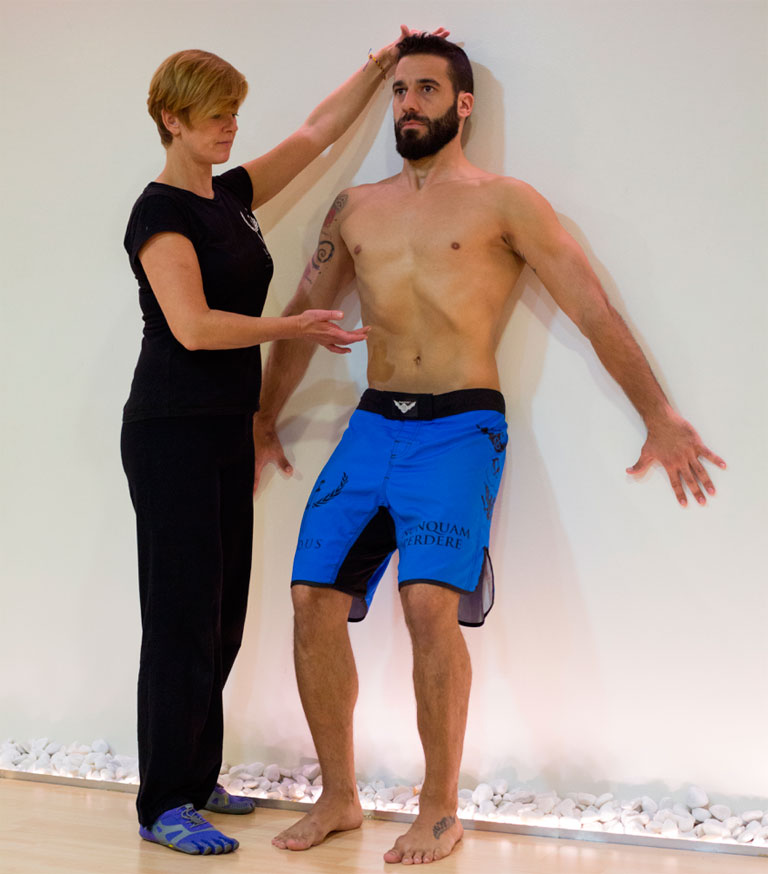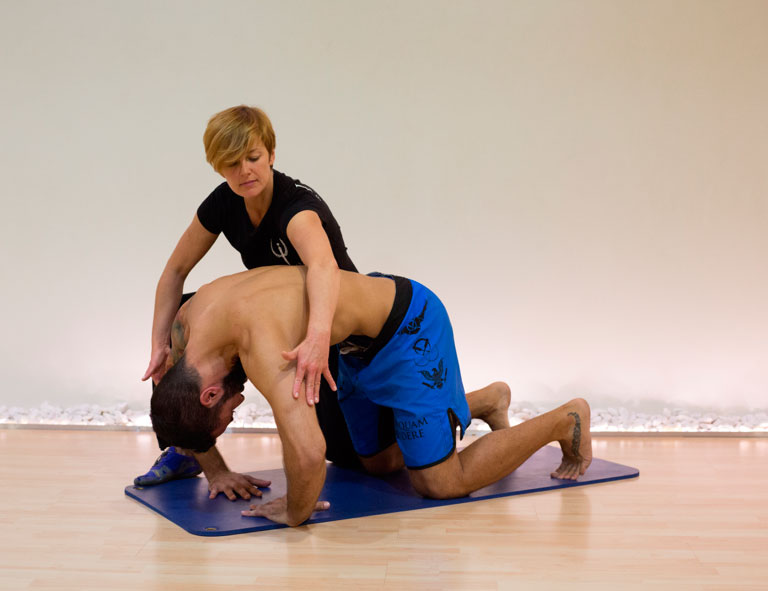Hypopressive RSF, Functional Systemic Reprogramming, is a postural method developed for fitness and sport by the creator of the Hypopressive Method Marcel Caufriez and Néstor Serra. The objective is to have an optimal neuro-muscular response in front of a postural stimulus:
- Improvement in static and dynamic postural management.
- Prevention and improvement (in collaboration with the therapist) of back problems (cervical, dorsal and lumbar), as well as all types of hernias (hiatal, abdominal, spine, inguinal or vaginal, including urinary incontinence).
- Improvement of respiratory parameters, increasing inspiratory volume as well as expiratory strength.
- Improvement of cardiovascular parameters, favoring venous and lymphatic return of the lower extremities.
- Improvement of sexual function thanks mainly to an increase in muscle tone and vascularization of the perineum.
- It is a perfect system to improve sports performance, increasing flexibility and anatomical mobility, providing greater reflex activation of the lumbar-pelvic area, which generates a better connection, stability and transmission of forces, increasing cardiovascular parameters such as Hematocrit, Hemoglobin and EPO, and above all preventing structural problems that may limit training or sports competition.
- Aesthetic improvements thanks to a better posture and a reduction of the waist circumference at rest and with any load.
- Provide pleasure and well-being.
Within the Hypopressive Method we distinguish two large branches related to each other, but due to their characteristics require a different type of treatment-exercises: Therapy and Fitness (and Sport)
Therapy:
Developed for the treatment and prevention of various functional pathologies: digestive, gynaecological, urinary, obstetric or postural, the Caufriez Concept therapeutic techniques are divided in three types:
The Hypopressive Abdominal Gymnastics (GAH) Techniques: These are all the exercises that include the so-called static hypopressive (HE) or abdominal basic gymnastics with their respective variants, including the asymmetric and underwater program.
Diaphragmatic Aspiration Techniques (ADT): All exercises are performed in supine or lateral recumbence and in decline positions under expiratory apnea conditions. The exercises are associated with postural manipulation of the diaphragm and ventilation with pure oxygen, under abdominal manometric control and recording of the blood pressure, heart rate variability and optionally under electromyography observation.
Tension Transfer Techniques (TTT): All exercises are performed in hypopressive posture in expiratory apnea, associated with postural tensioning of antigravity muscle groups through the technique of energetic pumping, with oxygen therapy, under abdominal manometric control and optionally, simultaneously using electro stimulation or vibratory neuromuscular stimulation. They are mainly used in muscular tonic dysfunctions such as respiratory dystonia, vesic-sphincteric or anorectal dysinergia, severe hypotonia of the abdominal-perineal girdle, postural asymmetry, etc.). The TTT also includes a specific program designed to facilitate the descent of the fetal motive and the expulsion phase.
Fitness and Sport
Created to improve the health and physical condition associated or not with sport, the Hypopressive RSF is mainly a postural technique that exercises a powerful prevention of hernias, while increasing sports performance. Through different levels of progression ranging from static to dynamic exercises with significant loads, the objective is to put in a hyperpressive postural situation so that the client gradually controls the pressure exerted on the structures, improving muscular reflex activation while improving the sports performance thanks to cardiovascular, respiratory and neuro-muscular benefits.



